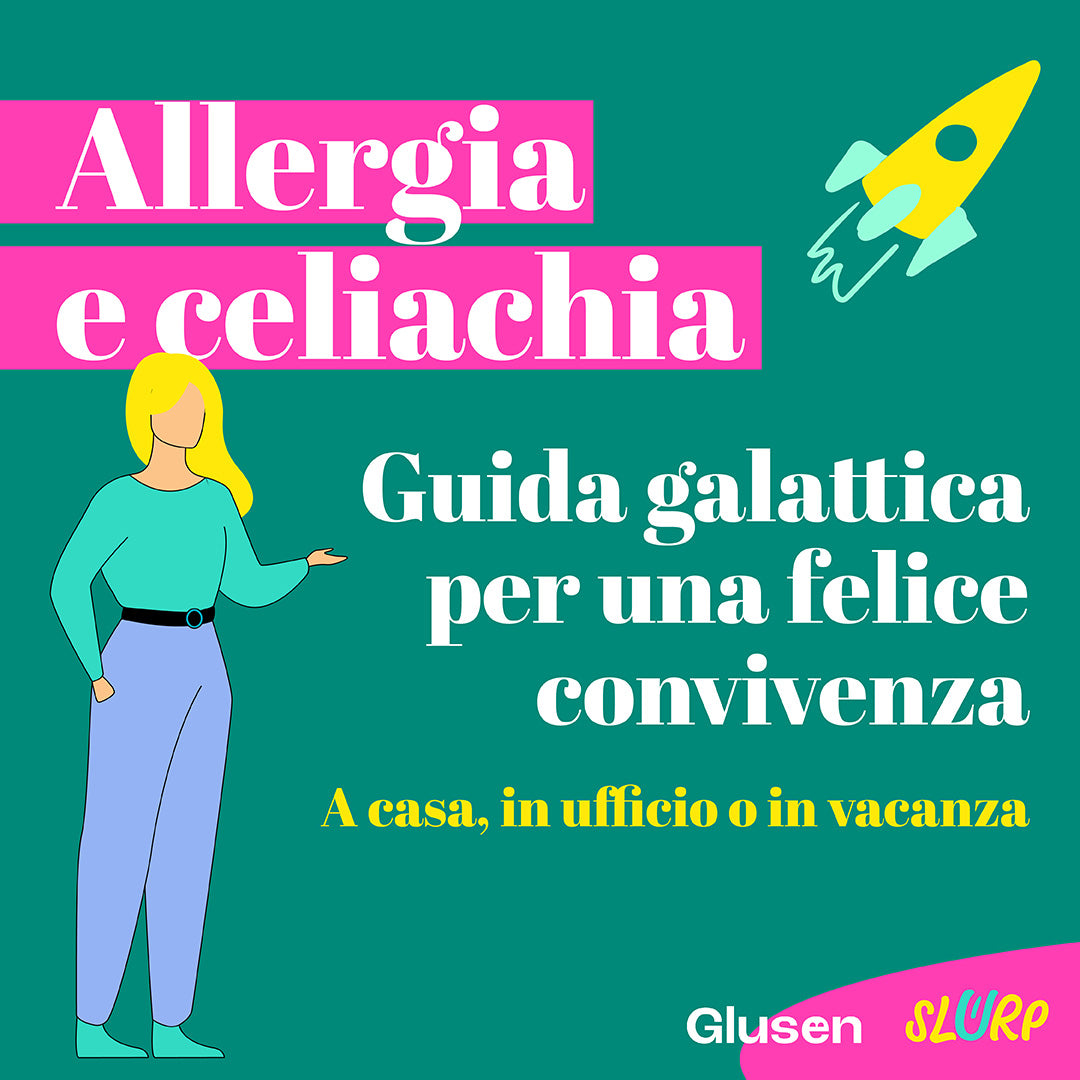
Galactic guide to happy coexistence for allergy sufferers and celiacs
Share
A new way of life for all
When the diagnosis of allergy or celiac disease comes, it must not only change the diet, but also the lifestyle. Starting by being careful about a number of daily gestures that could contaminate food.
These new attitudes should not only be related to the person receiving the diagnosis. They should be adopted by family members, colleagues or friends in everyday life. So that no one feels excluded and does not contaminate what is around them.
These new attitudes should not only be related to the person receiving the diagnosis. They should be adopted by family members, colleagues or friends in everyday life. So that no one feels excluded and does not contaminate what is around them.
Often, small gestures of daily life, can lead to small contaminations that become a big problem for those with allergies or celiac disease.
So here are some small tips for a happy coexistence, not only at home, but also at the office or on vacation with friends.
So here are some small tips for a happy coexistence, not only at home, but also at the office or on vacation with friends.
Always wash your hands
In addition to being a good hygienic practice, washing your hands every time you have touched food makes it easy to avoid contamination of plates, cutlery and everything around.
Clean drawers and countertops
For allergy sufferers and celiacs, contamination could occur with cutting boards, knives and worktops,
so it is a good idea to change knives and rinse the board you are working with to avoid contamination.
For a celiac, another problem is bread crumbs that could be created by handling this food or cutting it. In general, it is always a good idea not to work
on wooden cutting boards or use ladles of the same materials because they retain all impurities.
so it is a good idea to change knives and rinse the board you are working with to avoid contamination.
For a celiac, another problem is bread crumbs that could be created by handling this food or cutting it. In general, it is always a good idea not to work
on wooden cutting boards or use ladles of the same materials because they retain all impurities.
Jars, containers, tappers
Again, the greatest danger comes from knives and cutlery that have touched contaminating foods before being placed in jars or containers to pick up the contents, such as jam jars or tappers in the office.
To avoid contaminating everything, it is always a good idea to use a dedicated cutlery to pick up the contents and then use your own cutlery to spread or move what you have picked up.
To avoid contaminating everything, it is always a good idea to use a dedicated cutlery to pick up the contents and then use your own cutlery to spread or move what you have picked up.
Organize the kitchen
When living with an allergic or celiac person, it is essential to organize the spaces in the kitchen
to contain any possible contamination.
Create a FREE area: both in the pantry and in the refrigerator is essential not only for contamination but also so as not to "make a mistake" in taking one product rather than another.
Ad hoc tableware: it would be preferable to have kitchen tools and a dedicated set of pots and dishes, but space does not always make this possible. In these cases or when you are at the home of friends and relatives, cleanliness is always the rule.
to contain any possible contamination.
Create a FREE area: both in the pantry and in the refrigerator is essential not only for contamination but also so as not to "make a mistake" in taking one product rather than another.
Ad hoc tableware: it would be preferable to have kitchen tools and a dedicated set of pots and dishes, but space does not always make this possible. In these cases or when you are at the home of friends and relatives, cleanliness is always the rule.
Shopping for groceries safely
At home as well as on vacation, grocery shopping is a critical time to deal with, especially if someone who does not have an allergy or celiac disease is doing it.
Read the labels: the ingredient list allows you to see if the allergen is present within that product. Allergens are always marked in bold type. Also check for wording such as "may contain" or "processed in a facility that produces...". For celiac disease, you can check for the presence of gluten-free wording.
For loose over-the-counter products such as meat, fish, cured meats, etc., it is always a good idea to ask
the staff or check the ingredient book.
Read the labels: the ingredient list allows you to see if the allergen is present within that product. Allergens are always marked in bold type. Also check for wording such as "may contain" or "processed in a facility that produces...". For celiac disease, you can check for the presence of gluten-free wording.
For loose over-the-counter products such as meat, fish, cured meats, etc., it is always a good idea to ask
the staff or check the ingredient book.
Valentina Tedesco

